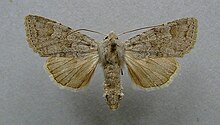.mw-parser-output .hidden-begin{box-sizing:border-box;width:100%;padding:5px;border:none;font-size:95%}.mw-parser-output .hidden-title{font-weight:bold;line-height:1.6;text-align:left}.mw-parser-output .hidden-content{text-align:left}@media all and (max-width:500px){.mw-parser-output .hidden-begin{width:auto!important;clear:none!important;float:none!important))You can help expand this article with text translated from the corresponding article in German. (October 2022) Click [show] for important translation instructions.
View a machine-translated version of the German article.
Machine translation, like DeepL or Google Translate, is a useful starting point for translations, but translators must revise errors as necessary and confirm that the translation is accurate, rather than simply copy-pasting machine-translated text into the English Wikipedia.
Do not translate text that appears unreliable or low-quality. If possible, verify the text with references provided in the foreign-language article.
You must provide copyright attribution in the edit summary accompanying your translation by providing an interlanguage link to the source of your translation. A model attribution edit summary is Content in this edit is translated from the existing German Wikipedia article at [[:de:Ammoconia senex]]; see its history for attribution.
You may also add the template ((Translated|de|Ammoconia senex)) to the talk page.
For more guidance, see Wikipedia:Translation.
| Ammoconia senex | |
|---|---|

| |
| Female | |
| Scientific classification | |
| Domain: | Eukaryota |
| Kingdom: | Animalia |
| Phylum: | Arthropoda |
| Class: | Insecta |
| Order: | Lepidoptera |
| Superfamily: | Noctuoidea |
| Family: | Noctuidae |
| Genus: | Ammoconia |
| Species: | A. senex
|
| Binomial name | |
| Ammoconia senex (Geyer, 1828)
| |
| Synonyms | |
| |
Ammoconia senex is a moth of the family Noctuidae. It is found in the European part of the Mediterranean Region and an isolated population near the Middle Rhine. It is also found in Turkey, the Caucasus, Iraq and Iran.
The wingspan is 36–46 mm. Adults are on wing from September to October or November.
The larvae feed on various low-growing plants, including Plantago and Taraxacum.